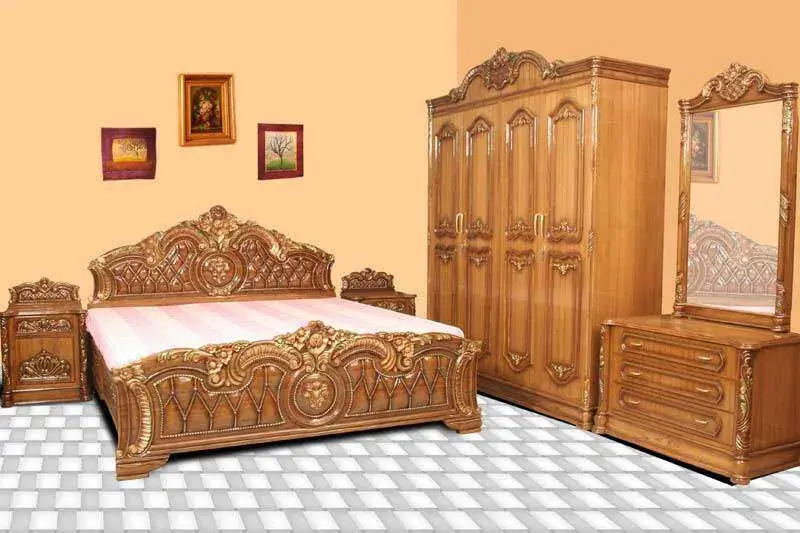In a world where technology touches nearly every aspect of our daily lives, it’s no surprise that furniture is also getting a smart makeover. From voice-controlled recliners to coffee tables with built-in fridges, smart furniture is reshaping the way we live, work, relax, and even sleep. This digital transformation is not just about flashy gadgets—it’s about convenience, wellness, efficiency, and future-ready living.
What is Smart Furniture?
Smart furniture refers to home or office furnishings integrated with technology that enhances usability, connectivity, and adaptability. These pieces often include features such as wireless charging, IoT connectivity, sensors, and automation capabilities. The idea is simple: furniture that does more than just sit pretty—it works with your lifestyle.
The Evolution: From Static to Interactive
Traditional furniture has always prioritized form and function, but it remained largely static. With the rise of smart homes and connected ecosystems, expectations have shifted. Today’s consumers want furniture that adapts to their needs, supports productivity, and complements their tech-savvy lifestyles.
Smart furniture is bridging this gap—bringing both form and high-tech function into homes and offices.
Living Room: The Smart Comfort Zone
In the heart of the home, smart furniture is revolutionizing comfort and entertainment.
Smart Recliners & Sofas
These aren’t your average loungers. Today’s recliners come equipped with features like heating, massaging, USB charging ports, and even app-controlled reclining positions. Some can learn your favorite seating style and adjust automatically.
Multifunctional Coffee Tables
Modern smart coffee tables now include Bluetooth speakers, integrated coolers, touch panels, and wireless charging pads—perfect for hosting guests or enjoying a movie night with everything at arm’s reach.
Voice-Activated Lighting & Seating
Paired with systems like Amazon Alexa or Google Assistant, your smart couch can be paired with ambient lighting systems to create mood-based scenes. Want to dim the lights and recline for a Netflix binge? Just say the word.
Bedroom: Sleep Smarter, Not Just Better
Smart furniture in the bedroom focuses heavily on health and wellness.
Smart Beds
These track your sleep cycles, heart rate, and breathing patterns. Some models adjust firmness in real-time or lift your head slightly to reduce snoring. Others come with under-bed lighting and temperature control for enhanced comfort.
Automated Nightstands
Imagine a nightstand that senses when you wake up and automatically illuminates a soft light, or one with biometric locks to keep your valuables safe. These are no longer ideas of the future—they’re available today.
Home Office: The Productivity Powerhouse
With remote work now mainstream, home offices are embracing tech-forward furniture to boost productivity.
Height-Adjustable Smart Desks
These desks come with memory presets, calorie tracking, posture reminders, and integration with productivity apps. They encourage healthier work habits by nudging users to alternate between sitting and standing throughout the day.
Smart Ergonomic Chairs
Smart chairs can now monitor your posture, provide real-time feedback, and even send reminders to stretch or adjust your seating. Paired with mobile apps, they turn sitting into a more mindful experience.
Kitchens & Dining Areas: Functional Meets Futuristic
Tech is also sneaking into the kitchen and dining furniture space.
Smart Dining Tables
Some tables now come with integrated screens, touch controls, and even smart weighing surfaces that suggest portion sizes or recipes based on ingredients placed on them.
Connected Kitchen Islands
These can include smart induction cooktops, charging stations, voice control, and built-in displays that show recipes or connect to your smart fridge.
Why Smart Furniture Is the Future
The demand for smart furniture is expected to surge in the coming years—and for good reason:
- Increased Convenience: With integrated tech, daily tasks become effortless—from charging devices to adjusting positions or temperatures.
- Health Benefits: Sleep-tracking beds and posture-correcting chairs support long-term wellness.
- Space Optimization: Smart, multi-functional furniture is ideal for urban living and smaller spaces.
- Eco Efficiency: Many smart furniture pieces are energy-efficient and work with smart home systems to reduce consumption.
Challenges and Considerations
Despite the appeal, smart furniture does come with a few challenges:
- Cost: Advanced features often come with a higher price tag.
- Compatibility: Not all smart furniture integrates seamlessly with existing smart home ecosystems.
- Privacy: With sensors and connectivity, there’s always a concern around data privacy and security.
That said, as technology becomes more accessible and standards become more universal, these challenges are likely to fade.
Final Thoughts
Smart furniture Dubai is no longer a futuristic concept—it’s a present-day reality transforming how we interact with our homes and workspaces. Whether it’s a bed that monitors your sleep or a desk that improves your posture, the integration of technology into furniture brings new dimensions of comfort, efficiency, and personalization.
As lifestyles evolve, so too should our living spaces. And with smart furniture, the future is not just connected—it’s beautifully designed, highly functional, and deeply human-centric.

